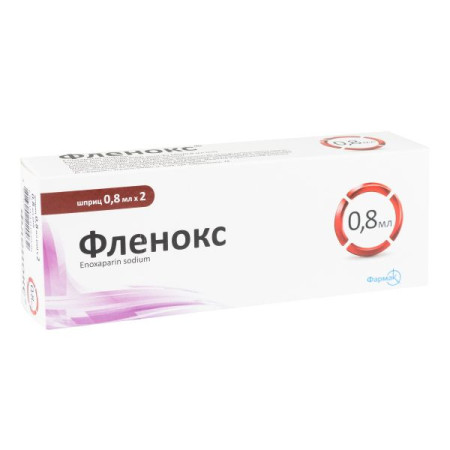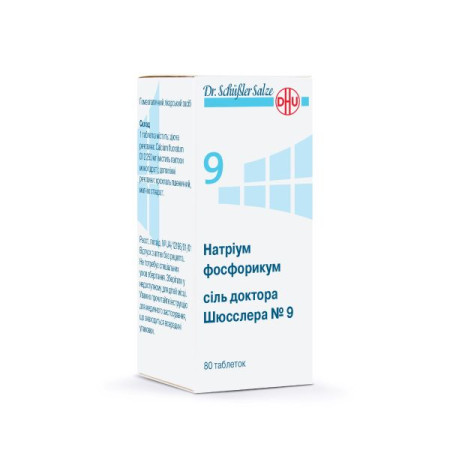Nitrosorbide tablets 10 mg blister No. 40

Instructions Nitrosorbide tablets 10 mg blister No. 40
Composition
active ingredient: isosorbide dinitrate;
1 tablet contains isosorbide dinitrate in the form of diluted isosorbide dinitrate (calculated on 100% and dry matter) – 10 mg;
Excipients: lactose monohydrate, crospovidone, calcium stearate.
Dosage form
Pills.
Main physicochemical properties: round tablets with a flat surface, with beveled edges, white.
Pharmacotherapeutic group
Cardiological drugs. Vasodilators used in cardiology. Isosorbide dinitrate. ATX code C01D A08.
Pharmacological properties
Pharmacodynamics
Isosorbide dinitrate is one of the main antianginal agents from the group of organic nitrates, a peripheral vasodilator that affects mainly venous vessels.
Like all organic nitrates, isosorbide dinitrate acts as a nitric oxide (NO) donor. NO causes relaxation of vascular smooth muscle (mainly veins and systemic arteries) by stimulating guanylate cyclase and subsequently increasing the concentration of intracellular cyclic guanylate monophosphate (cGMP). As a result, cGMP-dependent protein kinase is stimulated and the phosphorylation of various proteins in smooth muscle cells is altered. This leads to dephosphorylation of myosin light chains and a decrease in contractility.
The action of isosorbide dinitrate is associated with a decrease in myocardial oxygen demand by reducing preload (dilation of peripheral veins and reduced blood flow to the right atrium) and afterload (reduction in total peripheral vascular resistance), as well as with a direct coronary dilator effect. Isosorbide dinitrate promotes redistribution of coronary blood flow to areas with reduced blood supply. Increases tolerance to physical exertion in patients with ischemic heart disease, angina pectoris.
The use of isosorbide dinitrate improves coronary perfusion without the development of "steal syndrome". It has an antihypertensive effect. In severe forms of heart failure due to a decrease in the tone of peripheral venous vessels, the drug reduces the load on the heart, pressure in the vessels of the small circle of blood circulation, and shortness of breath.
Pharmacokinetics
Bioavailability after oral administration is 22% (the effect of "first pass" through the liver). The onset of action is noted after 15-40 minutes, the maximum effect develops after 1.5-2 hours, the total duration of action is 4-6 hours and more. Metabolized in the liver. The half-life is 4 hours, may be prolonged with course use of the drug. Excreted in the urine almost completely in the form of metabolites.
Indication
Prevention and treatment of angina attacks, including post-infarction.
Treatment of chronic congestive heart failure in combination with cardiac glycosides and diuretics.
Contraindication
hypersensitivity to isosorbide dinitrate, other nitrates or to any component of the drug; increased intracranial pressure (including in case of craniocerebral trauma, hemorrhagic stroke), since venodilation may lead to its further increase; severe arterial hypotension (systolic blood pressure below 90 mm Hg), bleeding, hypovolemia (isosorbide dinitrate, by reducing venous return, may provoke syncope); acute circulatory failure (shock, vascular collapse); cardiogenic shock (if appropriate measures do not maintain a sufficient level of end-diastolic pressure); angina pectoris caused by hypertrophic obstructive cardiomyopathy; cardiac tamponade, aortic stenosis, mitral stenosis, constrictive pericarditis; acute myocardial infarction; primary pulmonary diseases (due to the risk of hypoxemia, which may be caused by redistribution of blood flow to hyperventilation zones), toxic pulmonary edema, cor pulmonale; severe anemia; angle-closure glaucoma; severe liver and/or kidney dysfunction, hyperthyroidism; concomitant use with phosphodiesterase inhibitors (e.g. sildenafil, tadalafil, vardenafil).
Interaction with other medicinal products and other types of interactions
Phosphodiesterase inhibitors (sildenafil, tadalafil, vardenafil) - during the use of isosorbide dinitrate, the treatment of erectile dysfunction with these drugs is contraindicated, since there is a potential risk of uncontrolled hypotension, life-threatening cardiovascular complications. If necessary, phosphodiesterase inhibitors should be taken no earlier than 72 hours after taking nitrates.
Alcohol - severe disulfiram-alcohol reactions are possible, including severe hypotension, collapse.
Antihypertensive drugs (e.g., beta-blockers, ACE inhibitors, calcium antagonists, vasodilators), phenothiazines, other nitrates/nitrites, quinidine, novocainamide, cyclic antidepressants, MAO inhibitors, narcotic analgesics - potentiation of the hypotensive effect of isosorbide dinitrate, possible development of orthostatic collapse.
Disopyramide - possible reduction in the effectiveness of isosorbide dinitrate.
Noradrenaline, acetylcholine, histamine - weakening of their effects when used with nitrates, since isosorbide dinitrate may be their physiological antagonist.
Sympathomimetic agents (including adrenaline, ephedrine, noradrenaline, naphthyzine, mezaton, isadrin) - possible reduction of the antianginal effect of nitrates.
Heparin - possible reduction of its anticoagulant effect.
Hydralazine - improves cardiac output in heart failure when used in combination with isosorbide dinitrate.
Miotic agents - isosorbide dinitrate reduces their effectiveness.
Atropine and other drugs that have M-cholinoblocking effects (e.g., etacizin, etmosin) - possible reduction of the vasodilatory effect of isosorbide dinitrate and increase in intraocular pressure.
Donors of sulfhydryl groups (captopril, acetylcysteine, unitiol) restore reduced sensitivity to the drug.
Sapropterin (tetrahydrobiopterin, BH4) is a cofactor of nitric oxide synthase. Use with caution preparations containing sapropterin with any drugs that have a vasodilating effect due to nitric oxide metabolism or contain nitric oxide donors (including nitroglycerin (GTN), isosorbide dinitrate (ISDN), isosorbide mononitrate).
Application features
The drug should not be used to relieve angina attacks.
When using the drug, cases of tolerance and cross-tolerance to other nitrates have been described. To prevent a decrease or loss of effect, prolonged use of large doses should be avoided. In the case of "nitrate" tolerance, it is recommended to cancel Nitrosorbide for 24-48 hours or, after 3-6 weeks of regular use, take a break for 3-5 days, replacing Nitrosorbide with other antianginal drugs during this time. Patients should be warned that the antianginal effect of isosorbide dinitrate is closely related to its dosage regimen, so the proposed dosage schedule should be carefully followed.
The drug should be prescribed with caution to patients with a tendency to orthostatic reactions, with hypothyroidism, hypothermia, malnutrition, as well as to elderly patients due to age-related changes in liver, kidney and heart function, concomitant diseases and taking other medications.
During treatment, especially with a gradual increase in dose, blood pressure and heart rate should be monitored.
Nitrosorbide should be discontinued by gradually reducing the dose.
To prevent hypotension and nitrate headache, treatment should be started at a low dose. Aspirin and/or acetaminophen may be used to reduce isosorbide dinitrate-induced headache without adversely affecting the antianginal effect of isosorbide dinitrate.
Treatment with the drug may cause the development of orthostatic reactions, which are more likely to occur with simultaneous use of alcohol or other vasodilators.
During treatment with Nitrosorbide, you should refrain from drinking alcohol.
Patients with glucose-6-phosphate dehydrogenase deficiency may develop acute hemolysis (favism) when using isosorbide dinitrate.
Taking isosorbide dinitrate may affect the results of colorimetric cholesterol determination.
Patients on maintenance therapy with the drug should be informed that they should not take drugs containing phosphodiesterase inhibitors (e.g. sildenafil, tadalafil, vardenafil) due to the risk of developing uncontrolled hypotension.
In patients with angle-closure glaucoma, an increase in intraocular pressure is possible. The drug contains lactose, therefore its use is contraindicated in patients with rare hereditary conditions such as galactose intolerance, lactase deficiency, glucose-galactose malabsorption syndrome.
Ability to influence reaction speed when driving vehicles or other mechanisms
Until the individual reaction to the drug is determined, one should refrain from driving or operating other mechanisms, considering that during treatment, there may be a decrease in the ability to concentrate and speed of psychomotor reactions, dizziness, and visual impairment.
Use during pregnancy or breastfeeding
There is insufficient data on the safety of isosorbide dinitrate during pregnancy. Nitrosorbide is contraindicated in the first trimester of pregnancy. In the second and third trimesters of pregnancy, the drug should be used only if the expected benefit to the mother/potential risk to the fetus is considered.
If it is necessary to use the drug during breastfeeding, breastfeeding should be discontinued.
Method of administration and doses
The dosage and duration of therapy should be determined individually by the doctor.
Adults should take 10-20 mg orally 3-4 times a day 30 minutes before meals, without chewing, with sufficient liquid. If the treatment is not effective, the dose may be gradually increased to the maximum - 120 mg per day.
In patients with congestive heart failure, hemodynamic monitoring is essential for determining individual dosage.
The interval between doses of the drug should be at least 4 hours.
Elderly patients: the dose may be reduced, especially in cases of impaired renal and/or hepatic function.
There is no experience with use in children.
Overdose
Symptoms: decreased blood pressure, pallor, increased sweating, weak pulse filling, dizziness, headache, orthostatic hypotension, weakness, reflex tachycardia, hyperthermia, nausea, vomiting, diarrhea. Since nitrite ions are released during the biotransformation of isosorbide dinitrate, the possibility of developing methemoglobinemia with cyanosis, subsequent tachypnea, anxiety, loss of consciousness, cardiac arrest cannot be excluded.
In case of excessive doses, an increase in intracranial pressure with the appearance of cerebral symptoms, including seizures, is possible.
Treatment: in case of arterial hypotension, the patient should be given a horizontal position of the body with raised lower extremities, ensure the supply of oxygen. If the blood pressure does not normalize, the volume of circulating blood should be corrected, in severe cases, the administration of dopamine and sympathomimetics is indicated. The use of epinephrine (adrenaline) is contraindicated. In case of methemoglobinemia, depending on the severity of the condition, antidotes can be used: vitamin C (1 g orally), methylene blue (up to 50 ml of 1% solution intravenously), toluidine blue (initially 2-4 mg/kg of body weight intravenously, then - depending on the severity of the condition), as well as oxygen therapy, hemodialysis, transfusion therapy. In case of signs of respiratory or circulatory arrest, resuscitation measures should be applied immediately.
Adverse reactions
Immune system: skin allergic reactions (including itching, rash, urticaria, angioedema), skin vasodilation, including facial and trunk flushing, feeling hot, diaphoresis, flushing; exfoliative dermatitis/Stevens-Johnson syndrome, Quincke's edema.
Cardiovascular system: arterial hypotension and/or orthostatic hypotension with reflex tachycardia, symptomatic palpitations and symptoms of cerebral ischemia (including drowsiness, dizziness, weakness, blurred vision) in most cases at the beginning of treatment and with an increase in the dose; peripheral edema, usually in patients with left ventricular failure; associated with a decrease in blood pressure, exacerbation/increase in the frequency of angina attacks, pallor of the skin; collapse associated with bradycardia, cardiac arrhythmias and syncope; alveolar hypoventilation with subsequent hypoxemia and the risk of developing hypoxia/myocardial infarction in patients with ischemic heart disease.
Digestive tract: nausea, vomiting, heartburn, constipation, mild burning sensation of the tongue, dry mouth.
Nervous system: headache ("nitrate headache") at the beginning of treatment, which usually gradually decreases/disappears with continued use of the drug, but may be severe and persistent; pituitary hemorrhage in patients with undiagnosed pituitary tumors.
Blood and lymphatic system: hematological adverse reactions including methemoglobinemia, a case of isosorbide dinitrate-induced hemolytic anemia in a patient with concomitant glucose-6-phosphate dehydrogenase deficiency.
Organs of vision: blurred vision; angle-closure glaucoma; cases of visual hallucinations; narrowing of the visual field.
Other: cases of tolerance to isosorbide dinitrate, as well as cross-tolerance to other nitrates, have been described. Prolonged use of high doses and/or shortening of the dosing interval may lead to a decrease or even loss of the drug's effect. Cases of significant increases in plasma renin and aldosterone levels associated with a decrease in glomerular filtration rate and osmotically free water clearance have been reported in patients with cirrhosis of the liver, especially with ascites.
Expiration date
3 years.
Storage conditions
In the original packaging at a temperature not exceeding 25 °C, away from fire.
Keep out of reach of children.
Packaging
10 tablets in a blister, 4 blisters in a pack.
Vacation category
According to the recipe.
Producer
Public Joint Stock Company "Research and Production Center "Borshchagov Chemical and Pharmaceutical Plant".
Location of the manufacturer and its business address
Ukraine, 03134, Kyiv, Myru St., 17.
There are no reviews for this product.
There are no reviews for this product, be the first to leave your review.
No questions about this product, be the first and ask your question.











